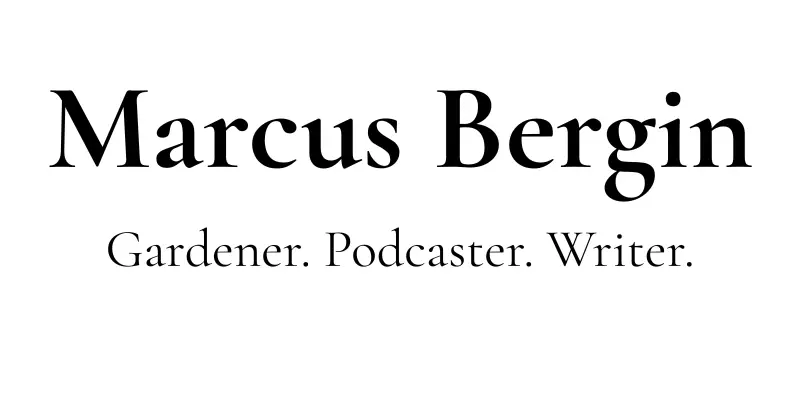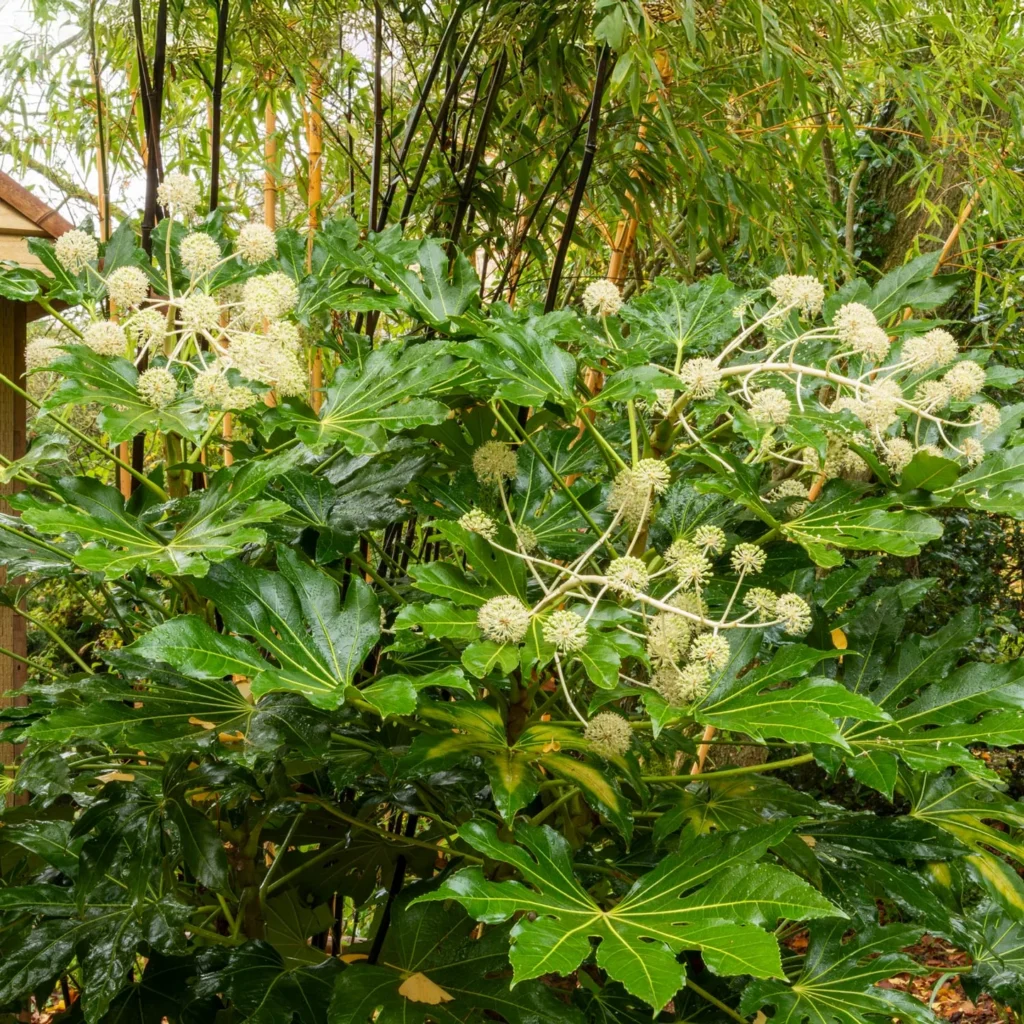
Fatsia Japonica: Bold, Evergreen, and Full of Surprises
You know those corners of the garden where nothing seems to want to grow? The ones that always feel a bit forgotten—north-facing, wind-whipped, maybe beneath a canopy or stuck behind the shed? That’s where Fatsia japonica quietly shines.
It’s the kind of plant you often inherit rather than buy—passed on with the house, tucked into an old border, or growing in a battered pot by the back door. But once you notice it—really notice it—you start to see what a gift it is.
Because Fatsia isn’t just one plant. It’s a whole characterful family.
The Stalwart: Fatsia japonica (Green Form)
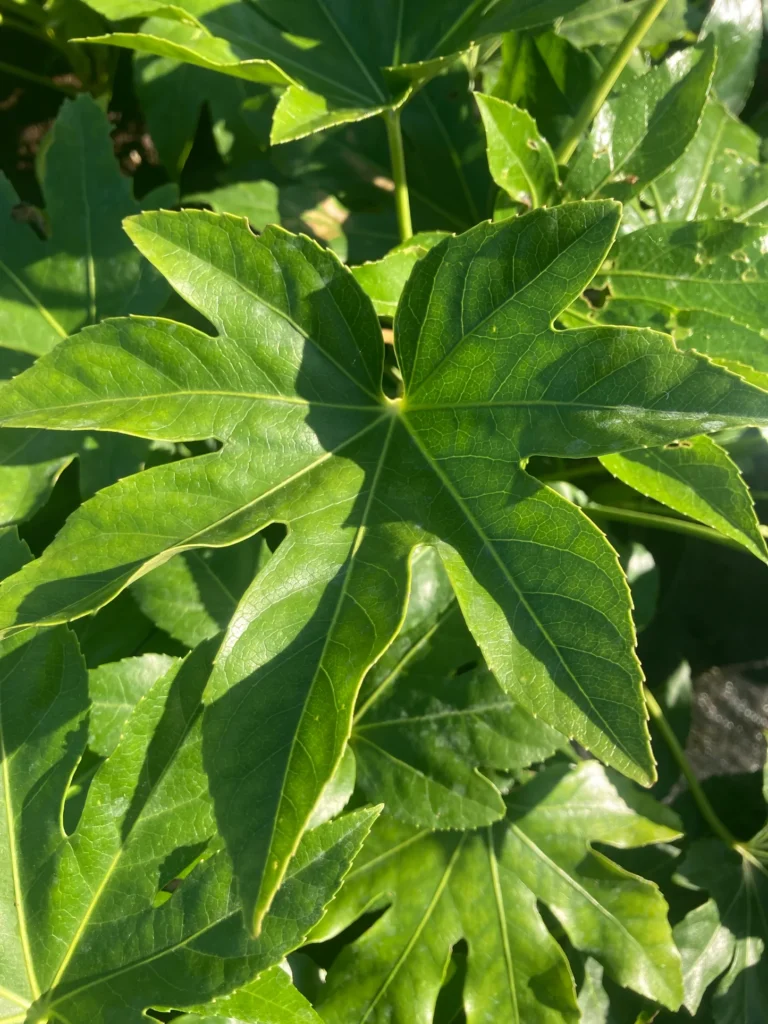
Let’s start with the classic. Deep green, hand-shaped leaves that can span a foot across, glossy enough to reflect the rain, and evergreen all year. Native to Japan and South Korea, Fatsia japonica has found its niche in British and American shade gardens alike. It’s hardy to around USDA Zone 7 and shrugs off neglect once established.
It’s happiest in part to full shade, where its bold texture adds real drama—perfect alongside ferns, hellebores, and hydrangeas. In autumn, you might be treated to creamy-white spherical flowers followed by inky black berries. A little tropical, a little architectural—always dependable.
The Head-Turner: Fatsia japonica ‘Spider’s Web’
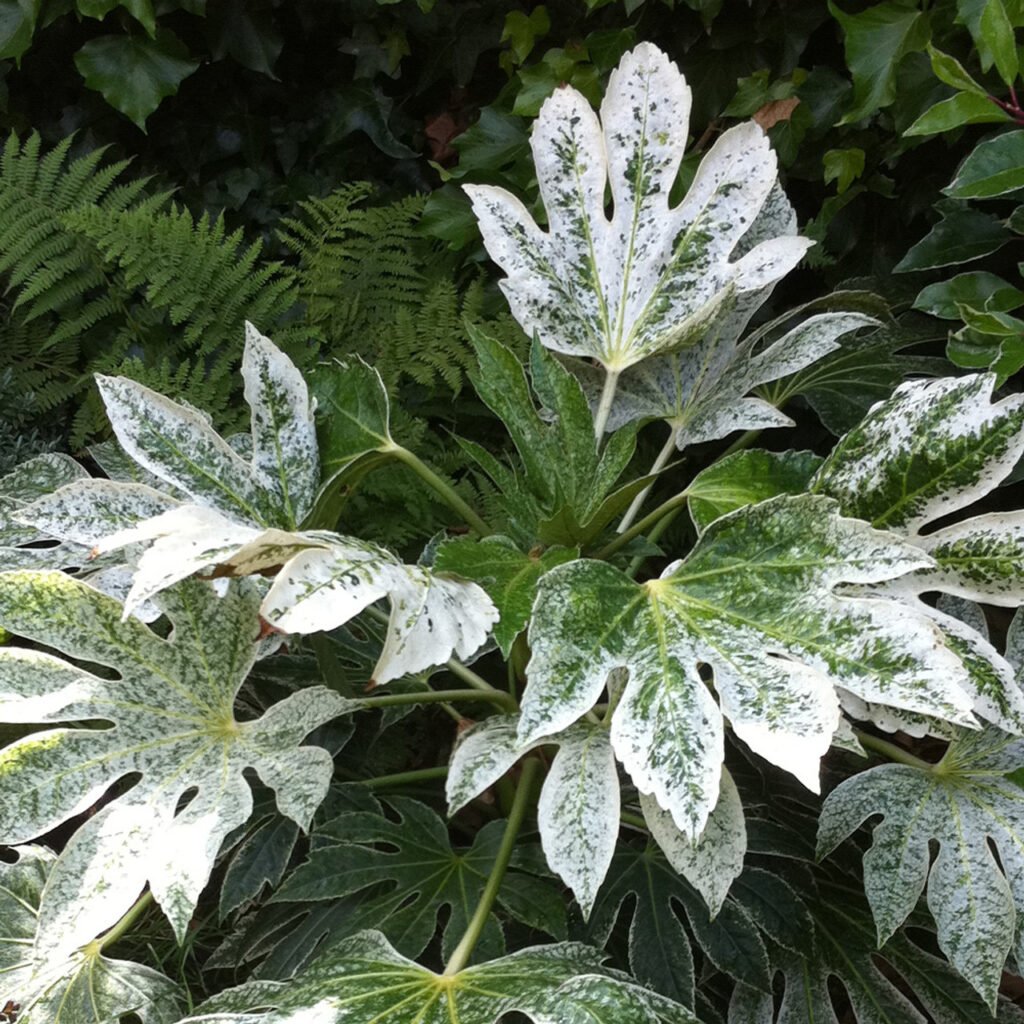
If the standard green form is quietly competent, ‘Spider’s Web’ is the showstopper. Its leaves look like they’ve been touched by frost, speckled and splashed with white. Some are heavily dusted; others barely touched—no two ever quite the same.
The effect, especially in low light, is ethereal. It brightens dark spots without needing flowers. But it does need a bit more shelter from wind and harsh sun—those white splashes can scorch. Think of it as your shy but dazzling guest: give it a calm corner and it’ll reward you.
The Painter: Fatsia japonica ‘Annelise’
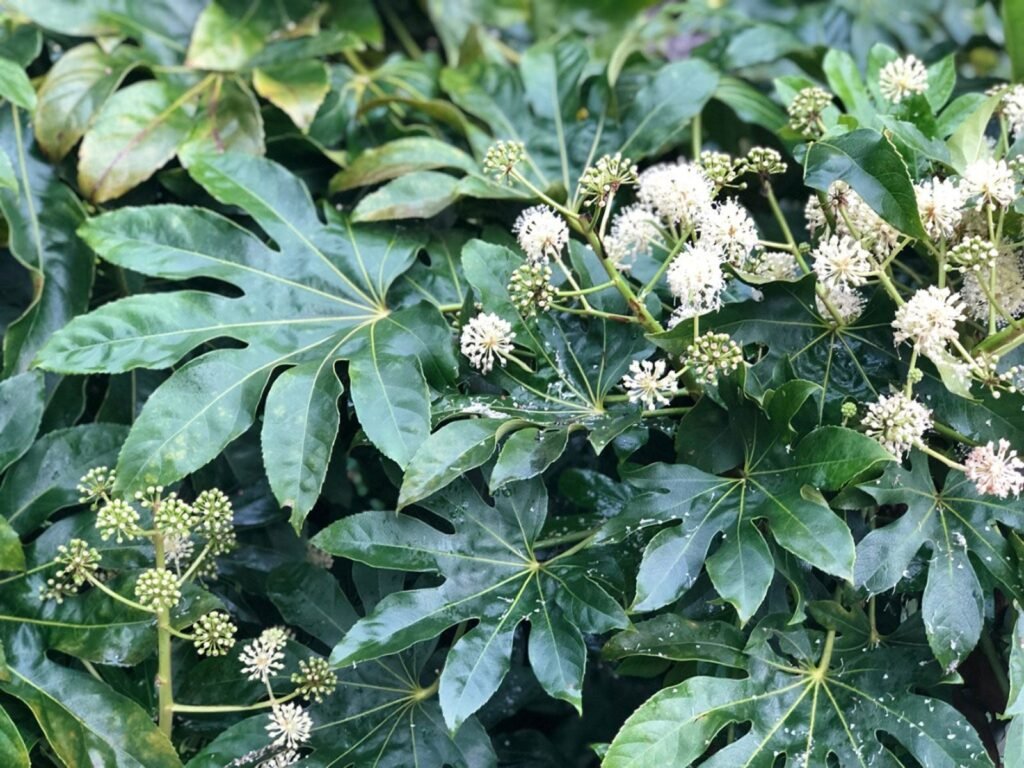
Less often seen but full of colour. ‘Annelise’ begins with leaves tinged in soft pink and peach before settling into creamy-yellow variegation brushed over rich green. It’s a painterly plant—one of those you find yourself stopping to look at again and again.
It does best in milder gardens, ideally with some protection from cold winds. In containers or as a focal point in a sheltered spot, it’s pure joy.
The Adventurer: Fatshedera lizei
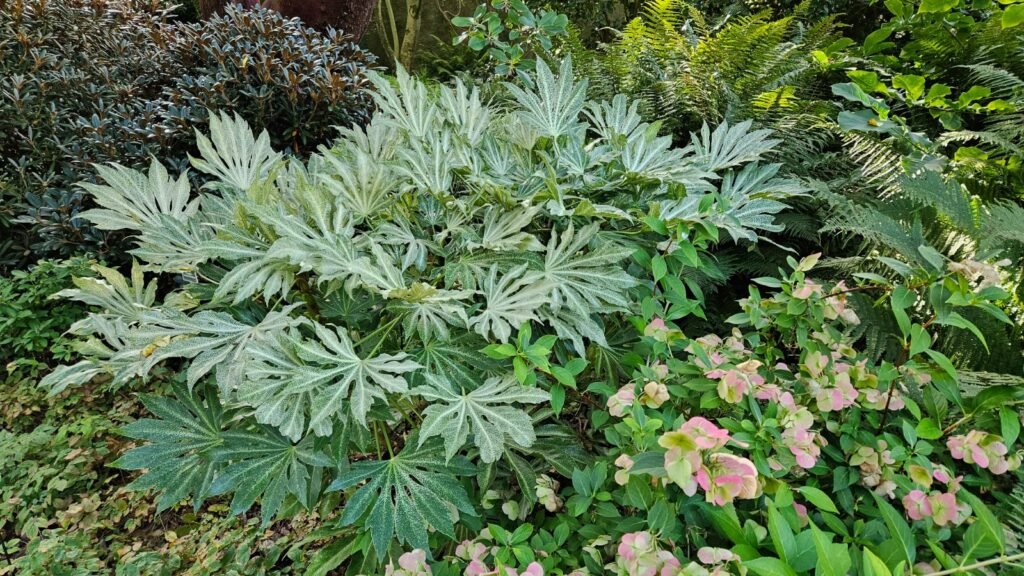
A botanical oddity that’s stood the test of time, Fatshedera lizei is a hybrid between Fatsia japonica and common ivy (Hedera helix). What you get is something entirely its own: ivy-shaped but chunky, scrambling but polite.
It won’t cling like ivy, and there are no aerial roots here, but it’s easy to train up supports or let it meander through a border. The variegated form is especially handsome in shade, with pale-edged leaves that catch the light. It’s a great option for small gardens or courtyards where you want vertical interest but not thuggish behaviour.
The Elegant Outsider: Fatsia polycarpa
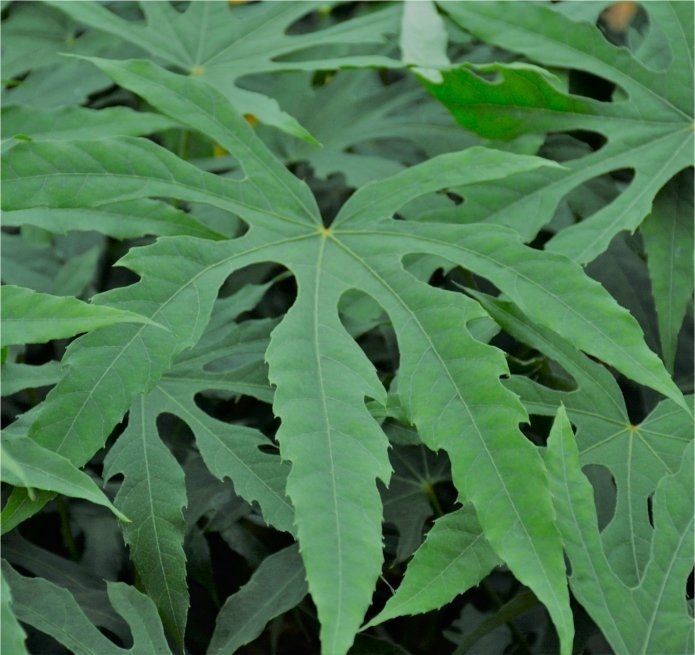
Not all Fatsias are bold and brash. Fatsia polycarpa, sometimes called the “Taiwan Fatsia,” has a more refined, almost fern-like look. Its leaves are more deeply divided and narrower than the classic japonica, somewhere between a castor oil plant and a Schefflera. There’s a grace to it, a woodland feel that makes it a perfect partner for softer planting schemes.
It’s less widely grown, but it’s a gem in the right spot, moist, sheltered, and shady. It also tends to be a little more cold-sensitive than Fatsia japonica, so best for milder regions (USDA Zones 8–10, though it can survive 7 with protection). In warmer climates or coastal gardens, though, it’s a brilliant alternative for a softer silhouette.
Give it room to breathe, and you’ll be rewarded with creamy flower sprays in autumn and a sense that you’ve planted something just a little different. It plays beautifully with ferns, epimediums, and other shade lovers with delicate textures.
How to Grow Fatsia Japonica and Friends
Light: Best in part to full shade, though green forms can take some morning sun.
Soil: Moist, well-drained, and preferably rich in organic matter. That said, they’re forgiving.
Feeding: An annual mulch of compost or leaf mould keeps them happy.
Watering: Keep watered in their first season. In pots, don’t let them dry out.
Pruning: Prune back leggy stems in spring to encourage bushy growth.
Pests: Rarely troubled. Occasional scale or aphids—a gentle spray usually sorts it.
Why We Love Them
There’s a quiet glamour to Fatsia. It doesn’t scream for attention, but it holds space—offering bold shape, rich colour, and structure even in winter. You can tuck it into the background or make it the star. It works in modern gardens, jungle-inspired planting, or as a foil to cottage-style borders.
And perhaps best of all, it reminds us that the most dramatic beauty in a garden doesn’t always come from flowers. Sometimes, it’s all in the leaves.
